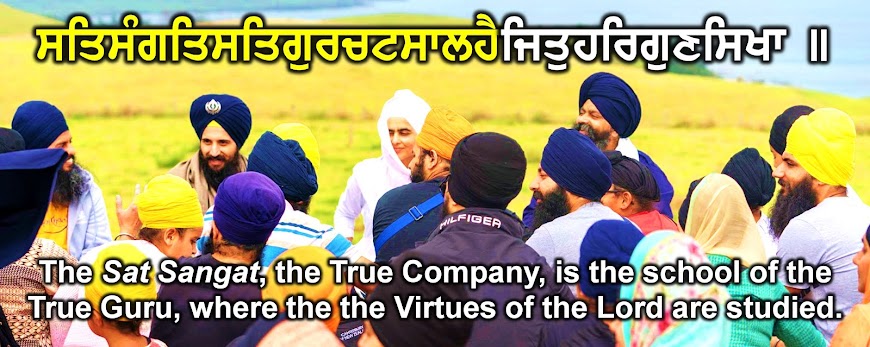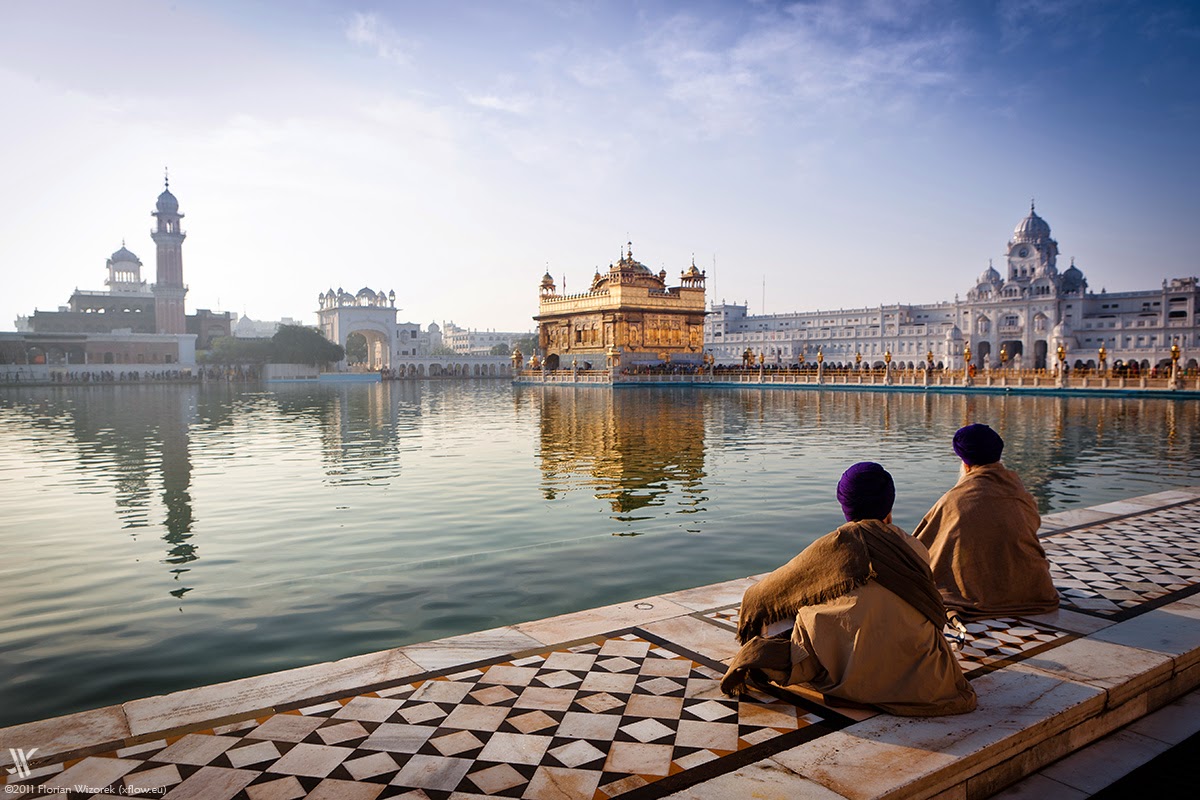Now the topic moved to dietary Bibek. Bibek is an expression meaning of conscious principles, divine intelligence, discerning wisdom, or strict adherence to observance of religious discretion. In Gurmat, 'Bibek' refers to a strict standard of conscious living based according to Gurmat principles as handed down by Guru Ji to His Sikhs.
ਸਤਿਗੁਰ ਬਚਨ ਕਮਾਵਣੇ ਸਚਾ ਏਹੁ ਵੀਚਾਰੁ ॥
"To obey and act according to the Instructions of the True Guru; this is the true philosophy and contemplation ('Bibek')"
(Siree Raag M:5, 52)
Gurmat Bibek encompasses all instructions given by Guru Sahib. There are two parts of Gurmat Bibek – Bibek relating to Simran and Bibek relating to Rehat. Simran Bibek includes chanting of Gurmantar-Naam (Divine-Name), Keertan, Gurbani Paatth and controlling the internal vices (i.e. lust, anger, greed, attachment and ego) etc. Rehat Bibek includes the code of conduct of the Khalsa e.g. abstaining from 4 Bajjar Kurehits (4 cardinal prohibitions), keeping Panj Kakkaars, giving out Daswandh (one tenth one one's income), dietary Bibek i.e. eating food cooked by Amritdharis whilst reciting Gurbani/Naam, eating in Sarbloh (pure iron) utensils etc. You can can say that there internal and external Bibek.
Conformity to a standard of excellence is never meant to produce a "I am more better than you" attitude. Bibek living is meant to instil humility in the practitioner, and produce an attitude of seva and simran, or selfless service coupled with meditation, as ridding the self of ego is the core principle of Sikhi that is crucial to realising the divine within. Commonly people call someone who lives as consciously as possible to Gurmat and strives to adheres to all of Guru Sahib's instructions as a 'Bibeki'.
Gurbani says:
ਸੋ ਜਨੁ ਰਲਾਇਆ ਨਾ ਰਲੈ ਜਿਸੁ ਅੰਤਰਿ ਬਿਬੇਕ ਬੀਚਾਰੁ ॥੨॥
"Those humble beings who are filled with 'Bibek-Beechaar' (divine wisdom and contemplation to analyse)-even though they intermingle with others (that are false or unrighteous), they remain distinct and do not conform. ||2||"
(Siree Raag M:3, 28)
Below are some of the claims of the group of individuals challenges of dietary Bibek and Sarbloh with Gurmat responses…
#1. "Keeping [dietary] Bibek pushes people away from Sikhi and divides people. We should try to bring people closer and through love encourage them towards Sikhi."
RESPONSE: I replied, "I personally have not experienced this. Rather the opposite." Guru Ji says:
ਦੀਨੁ ਛਡਾਇ ਦੁਨੀ ਜੋ ਲਾਏ || ਦੁਹੀ ਸਰਾਈ ਖੁਨਾਮੀ ਕਹਾਏ ||੧||
"One who withdraws from God's Path, and attaches himself to the world, is known as a sinner in both worlds. ||1||"
(Soohee M:5, 743)
The question is not about keeping Rehat or not, but how should we maintain Rehat. Rehat is not bad, but the way in how we express and carry out Rehat can be good or bad. We have a responsibility of ensuring we don't break anyone's heart and show respect to all but at the same time remain uncompromising in maintaining Guru Ji's principals and Rehat. There are countless of positive experiences I have had. I shared two incidents that have happened with me:
Incident 1 - Once I went to Holland for a camp at a Gurdwara Sahib. A Chardikala Amritdhari Mata Ji prepared Langar for me in Sarbloh. I sat in the Pangat (row to eat) with the rest of the Sangat. A Mona (cut-haired) Veer Ji distributing Parshaaday asked me if I wanted one. I politely put my hands together to indicate that I was okay. As soon as he walked away, the Amritdhari Mata Ji came to me and gave me a Parshaada. The Mona Veer Ji looked back and saw this. After eating Langar (which was full of Amrit-Rass, spiritually imbued), the Mona Veer Ji approached me and said to me that in the camp I had shown pyaar to the Sangat and said that if anyone has questions they can ask me. I asked what he wanted to ask. He said, "Bhai Sahib, I asked if you wished a Parshaada and you politely declined but then you accepted the Parshaada from the Mata Ji. Why is this?" I replied, "Before I explain you the answer. Veer Ji, can you tell me have I made you feel welcome at the camp and shown you love and respect?" The Veer Ji replied, "Yes, you have Bhai Sahib."
Then I carried on, "Veer Ji, my Guru has given me Hukam to eat from the hands of Amritdhari Gursikhs that keep Rehat. This is not an expression of "hate" (ਨਫ਼ਰਤ) but an expression of "love"." I continued, "Veer Ji, why does the son choose to eat food from the hands of his mother rather than the neighbour? Food is food after all? It is because the son feels the love of his mother imbued in the food he is eating. The son feels satisfied eating the food from his mother, but just his stomach but his heart is satisfied.... Similarly, food is food. But the food made by someone who loves the Guru, has taken Amrit, wakes up Amrit-vela, recites Nitnem, refrains from the Kurehats, maintains Rehat and recites Simran or Gurbani whilst cooking - that food becomes imbued with the Guru's love that the one who eats the food gets pulled towards the Guru. Eating such food, the eater experiences and feels the Guru's love and thoughts of the Guru. Eating such food, not only satisfies their physical hunger but also spiritually satisfied. We wake up in the morning to feel Guru Ji's love, we do our Nitnem to feel Guru Ji's love, we wear our Panj Kakkaar to feel Guru Ji's love, we recited our evening and bedtime Paatth to feel Guru Ji's love... similarly, a Gursikh eats from another Gursikh to feel Guru Ji's love."
The Veer Ji smiled and said, "Hearing this, I have no objection and I find it admirable. However, I have one question." I asked what his question was. He replied, "How do you that the Mata Ji you ate from had more Pyaar for Guru Ji than I did? I may have more Pyaar for Guru Ji than she does." I smiled and politely explained to Veer Ji, "Veer Ji, if you loved Guru Ji as much the Mata Ji does, then Veer Ji you would not have shaven when coming to the Gurdwara Sahib. If you loved Guru Ji as much as the Mata Ji then Veer Ji you would also wear the Panj Kakkaar that my Guru wants us to wear and take Amrit. Mata Ji's love is expressed in her actions that she has given her head to the Guru, she keeps Rehat and the fragrance of Guru Ji's love comes out of her mouth."
Veer Ji looked me in a reflective mood. I then with love said, "Veer Ji, Gursikhs don't keep this Rehat to express we our superior and your are superior, or that you are a low caste and we are high castes. Despite what you do, if you are born a low caste, the high caste will not eat from the other. However, Veer Ji, I willing to eat from you today. If you accept what my Guru says, I will accept what you say. If you take Amrit then I will eat from you happily." Veer Ji smiled and said "Thank you, I am satisfied with your answer and I am so glad I got to clarify about the Langar."
Few days later, I was informed by a Langar sevadaar that the Mona Veer Ji who asked me the questions was a user of drugs and took intoxicants. However, since the incident and learning about the Rehat of dietary Bibek, he had given up taking drugs. Vaheguru.
Incident 2 - Once I was I went to the USA for a camp. I went to the kitchen to collect Langar to eat. A Bhenji who had cut hair (a short fringe) and had cut eye brows, with enthusiasm said, "Bhaji, I am making Parothay. Please have these Parothay that I am making." I smiled and was thinking how I can explain to Bhenji in a way that she doesn't feel heart broken. Just I was thinking this, an Amritdhari Mata Ji lovingly said to her, "Daughter, he is not going to eat this Parothay. Bhai Sahib only eats Langar made by Amritdharis in accordance to Maryada." The Bhenji looked at me and said, "Vaheguru. Bhai Sahib, please do Ardaas that next time you come to USA that I can become worthy of making you Parothay. May Guru Ji bless me that next year I can cook you Langar." Bhenji decided to keep Rehat and work on taking Amrit. Vaheguru.
#2. "No where in Sri Guru Granth Sahib Ji is the concept of not eating from others because they are not Amritdhari or keeping Rehat." RESPONSE: Well actually Sri Guru Granth Sahib Ji does tell us. Some examples are:
ਸੰਤਨ ਕਾ ਦਾਨਾ ਰੂਖਾ ਸੋ ਸਰਬ ਨਿਧਾਨ ||
ਗ੍ਰਿਹਿ ਸਾਕਤ ਛਤੀਹ ਪ੍ਰਕਾਰ ਤੇ ਬਿਖੂ ਸਮਾਨ ||੨||
“The dry bread from the (homes of the) Gurmukhs is equal to all treasures. The thirty-six tasty dishes from (the home of) the faithless one, are (known to be) just like poison.”
(Bilaval M:5, p. 811)
ਨਾਨਕ ਜਿ ਨਾਮੁ ਨ ਚੇਤਨੀ ਤਿਨ ਧਿਗੁ ਪੈਨਣੁ ਧਿਗੁ ਖਾਣੁ ॥੧॥
“O Nanak! Those who do not contemplate the Naam, the Name of the Lord – cursed are their clothes, and cursed is their food. ||1||”
(Sorat’h M:3, 646)
Furthermore, Guru Gobind Singh Ji states in Rehatnamay (ethical codes of conduct) recorded by the Gursikhs that lived in His presence:
ਜਾਕੀ ਰਹਤਿ ਨ ਜਾਣੀਐ ਗੁਰਮੰਤ੍ਰ ਨਹੀ ਚੀਤ ||
ਉਨਕਾ ਭੋਜਨ ਖਾਇਕੈ ਬਿਸਰਹਿ ਹਰਿ ਸਿਉ ਪ੍ਰੀਤ ||
“One has no Rehat (spiritual discipline) and doesn’t contemplate on the GurMantar (given by the Panj-Piaare). Eating from such a person you will forget the love of God.”
(Rehatnama: Bhai Chaupa Singh Ji)
ਜੋ ਨਿਗੁਰੇ, ਅਣਪਾਹੁਲੀਏ ਨਾਲ ਵਰਤੇ, ਸੋ ਭੀ ਤਨਖਾਹੀਆ |
“Whoever associates with a Nigura (one who has not accepted a Guru) and one who has not taken ‘Pahul’ (Amrit) – they are liable for Thankhaah.”
(Rehatnama: Bhai Chaupa Singh Ji)
ਨੜੀ ਮਾਰ, ਸਿਰ ਗੁੰਮ, ਕੁੜੀ-ਮਾਰ ਨਾਲ, ਰੋਟੀ ਬੇਟੀ ਦਾ ਨਾਤਾ ਨਹੀਂ ਰੱਖਣਾ |
“Those who consume any intoxicant, cut their hair, or those who kill their baby-daughters – do not keep the relationship of eating from food from them or marriage with them.”
(Rehitnama Bhai Nand Lal Singh Ji)
To be continued...




























